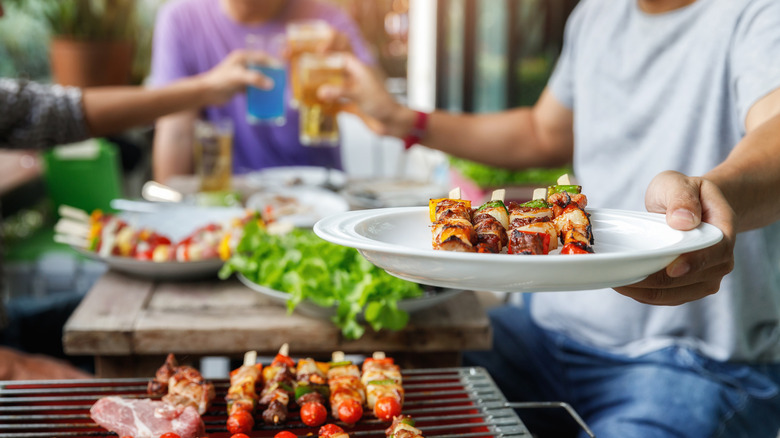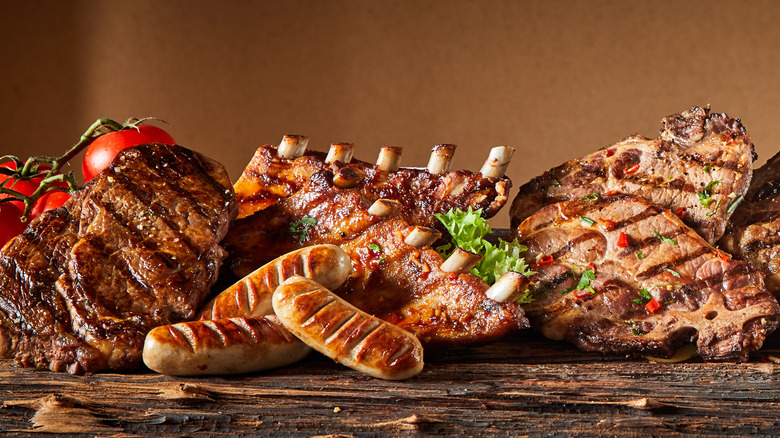The Real Difference Between Grilling And Barbecuing
Summertime is meant for delicious meals prepared outdoors, particularly when it comes to grilling and barbecuing. We may use the words interchangeably, but grilling and barbecuing are different techniques used for different reasons. How can we break down what differentiates grilling from barbecuing? Let's start with a little etymology.
The word "grill" comes from the Old French "graille" which refers to a metal grating, or the actual framework that's placed over an open fire. "Grill" can be used either as a noun, referring to the apparatus used to cook, or as a verb describing the manner of outdoor cooking.
"Barbecue" is a term with its origins in the Americas. It comes from the Spanish American "barbacoa," and refers to the framework for grilling food outdoors. The word can also be used as a noun, for either the device used to cook or for the food that's prepared, and also as a verb describing the process of cooking.
Both terms frequently carry the connotation of an outdoor gathering, of which outdoor cooking is a feature. There is a difference, though, in the cooking techniques that you should know.
It's all about time and temperature
ThermoBlog explains that grilling is cooking at a high temperature over direct heat. Whether it's over charcoal or a gas flame, the temperature from the heat source is around 2,000 to 3,800 degrees F, and the grill grate temperature is between 500 to 700 degrees. Cook times are typically measured in minutes, rather than hours. Grilling is ideal for foods that cook quickly, like burgers, hotdogs, steaks, chicken, seafood, and vegetables.
Barbecuing is cooking low and slow, meaning a much lower temperature of about 200-300 degrees and a much longer cooking time, sometimes as long as 18 hours. Barbecuing usually incorporates smoke for flavor, and the cooking is done with indirect heat, rather than directly over flames or charcoal. It's important to choose the right kind of wood for smoking meats, and Smoked BBQ Source points out that softwoods like pine, cedar, and spruce should be avoided, as they contain too much sap and resin, which produce acrid smoke. Instead, look for hardwoods like oak, hickory, mesquite, and fruit woods. The best types of meat for barbecuing have plenty of fat and connective tissue, which require longer cooking times to tenderize. Cuts like brisket, pork shoulder, and ribs work well.
Whether it's burgers on the grill for dinner or ribs in the smoker for a special occasion, both grilling and barbecuing can yield delicious results. Grab some condiments or a sweet and spicy barbecue sauce, and your summer table will be set.

